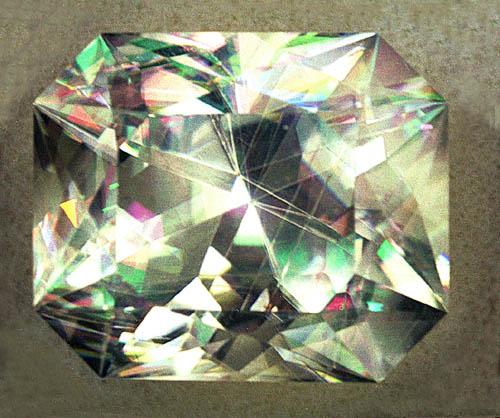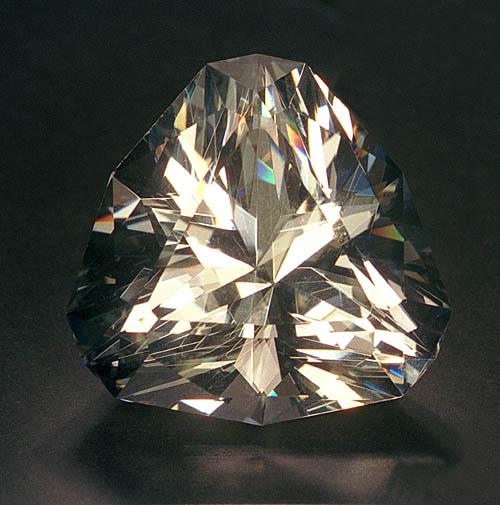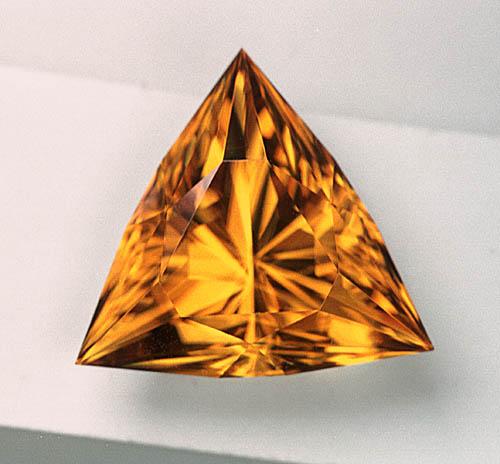Twinned Calcite from San Eulalia, Chihuahua, Mexico
No. 543: Ember Cut, SI1, 31.20 ct., 20.8 x 12.3 x 14.0 mm, faceted by R. Drummond, $312.00 Sold
If this gemstone looks a little stange to you, there is good reason for you to think so. Calcite is an extremely soft mineral (Mohs 3.0) that is never used in jewelry. It is strictly a collector's gem that is occasionally found in museums in faceted form. Most gem cutters would rather have a root canal than try and facet a piece of calcite. This mineral is so soft that it is difficult to obtain a good polish. When a piece of calcite is faceted, it is not necessarily very attractive. Colorless calcite looks rather drab, its' index of refraction is lower than that of quartz. However, when several different calcite crystals grow together, and interpentrate (a phenomenon termed crystal twinning), something special happens. Each time light passes from one twinned crystal zone into another crystal zone, the interface acts like a prism surface. Light is split into its spectral components. If the gem cutter places the twinning planes in the correct orientation, the finished gem is filled with brilliant flashes of color (Irridescence). Calcite also shows strong double refraction. Can you note two sets of facet junctions in the above image? Because of the particular way that the calcium carbonate molecules pack in a calcite crystal, light is split and travels in separate paths. One point/facet junction on the bottom of the gem looks like two. Whatever the cause, a faceted twinned calcite looks like few other gemstones. This specimen would be a rare and fine additon to any gemstone collection.
|






